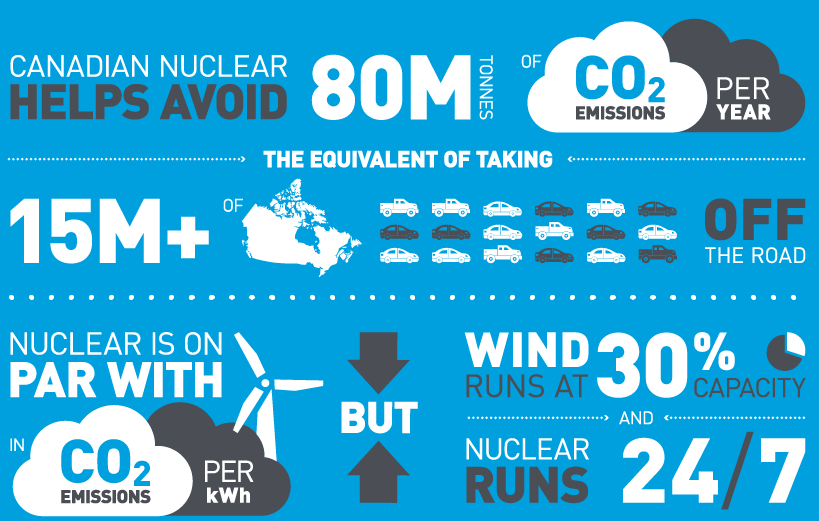Nuclear energy provides 15% of Canada’s electricity and over 60% of Ontario’s electricity.
Ontario Power Generation operates 10 of Canada’s 19 nuclear power reactors.

Nuclear energy is part of Canada's clean, low-carbon future:
Nuclear energy is helping in the fight against climate change:
Nuclear medicine saves and improves lives:
Nuclear technology makes food and water safe and accessible:
Innovation in new nuclear technologies offer immense potential: